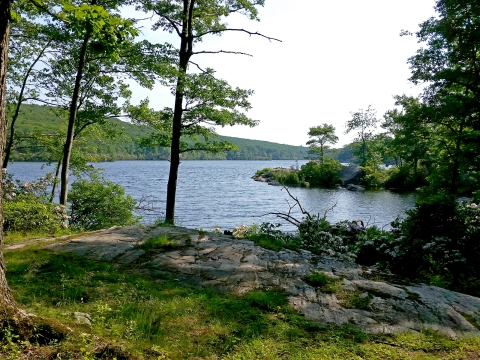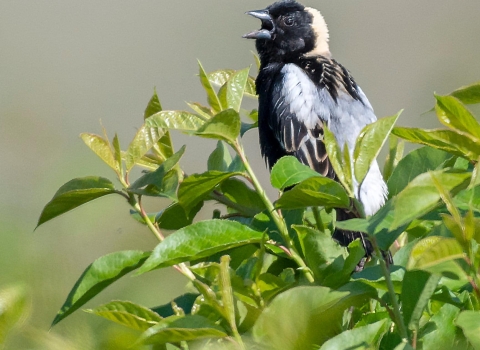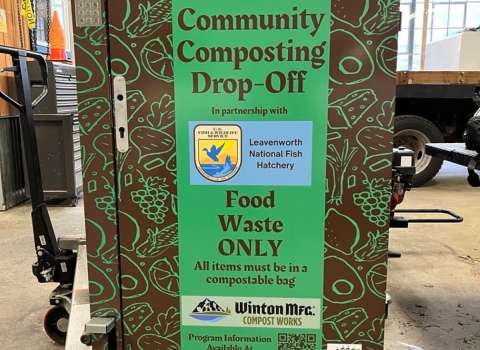Connecting with nature can help a person relax, be inspired and feel rejuvenated. Mark Zakutansky was so inspired by his time outdoors as a child that he has built a career conserving wild places so others may have those opportunities too.
Zakutansky is director of conservation policy engagement with the Appalachian Mountain Club, working alongside the Highlands Coalition and U.S. Fish and Wildlife Service, and devoting his time to helping others experience nature and the many benefits and resources it offers.
“Whether it’s in a park, a ball field, or a remote wilderness experience, it’s important to provide access to the outdoors for all people,” Zakutansky said.
Zakutansky’s passion for connecting people to nature stems from the many outdoor experiences he had when he was young. Through camping outdoors with the Boy Scouts in New Jersey as a child and moving to Pennsylvania when he was older, Zakutansky developed a deep appreciation for the natural world.
Publicly accessible lands where people can experience nature are becoming more prevalent, thanks in part to land conservation efforts in the Highlands Region. Stretching from northwestern Connecticut, through New York and New Jersey, and into eastern Pennsylvania, the Highlands Region covers a 3.4-million-acre landscape of Appalachian ridges, hills and plateaus. The conserved properties in this region provide drinking water resources to local towns and cities, protect wildlife habitat and create public areas for outdoor recreation.
“The Highlands is rich in agricultural tourism, culture, heritage and wildlife. It’s a place where people make lots of memories, such as visiting a rural community, a pumpkin farm, the Appalachian Trail or going apple picking. There is a great deal of history here which can be seen by exploring old mills, old furnaces and hiking the Cannonball Trail,” he said.
The Highlands Coalition is vital to protecting the valuable resources throughout the Highlands landscape. Formed in the 1990s, the coalition came together at the threat of development of Sterling Forest in New York, a plan that was destined to be one of the largest residential and industrial developments in the country and would have adversely impacted drinking water in both New York and New Jersey. More than 200 nonprofit groups combined resources to save Sterling Forest.
Once formed, the Highlands Coalition supported passage of the Highlands Conservation Act, which was signed into law in 2004. It protects threatened and endangered species, safeguards clean drinking water, allows for creation of outdoor recreational areas and helps sustain working forests and farms in the Highlands Region. Highlands Conservation Act land acquisition grants are administered by the Service’s Wildlife and Sport Fish Restoration program.
“The Highlands is a critically important landscape for ensuring so many species have access to the habitat they need to survive, including bobcats, amphibians, etc. If we allow threats to move in, such as development, those experiences won’t be available. The coalition serves to ensure the landscape is protected and available for future generations,” Zakutansky said.
Timothy Abbott, regional conservation director for the Housatonic Valley Association, has known Zakutansky for many years and speaks highly of his effective leadership and support.
“Mark thrives in collaborative work, and it has real impact throughout the Highlands Region,” said Abbott. “I'm proud to have him as a friend, colleague and ally. As a strategist he is peerless, with superb instincts, but he also elevates and amplifies the work of his Highlands partners, recognizing what we bring to the table and helping us deploy our outreach to best effect.”
Through the Highlands Conservation Act grant program, the Service awards funding for land conservation projects to state agencies, which identify and protect land, often with the support of Highlands Coalition members. The program offers a unique public and private partnership that over the years has conserved more than 15,000 acres.
“Mark’s involvement with the Highlands Coalition has created opportunities for the support of this great region, safeguarding our natural resources and allowing for the protection of public drinking water, critical wildlife habitat and outdoor recreation spaces. His leadership of the Highlands Coalition has been instrumental in the success of the Highlands Conservation Act program,” said Colleen Sculley, assistant regional director of the Service’s Wildlife and Sport Fish Restoration program in the Northeast.
Zakutansky’s enthusiasm for the Highlands Region is incredible. The importance of his work — more than 10 million people depend on the region for drinking water — propels him forward. He’s motivated by the chance for others to experience the area. One site that he suggests visiting is Bear Mountain in New York. The mountain, as he describes it, is close to New York City and offers visitors miles of trails, scenic vistas and countless opportunities to explore nature.
“The Highlands is special, it’s in our back yard,” Zakutansky said. “I connected with the Highlands early as a youth. I hiked Cannonball Trail as a kid and visited Bear Mountain in New York. Connecting to a landscape with scenic rivers, outstanding wildlife, community character and a sense of place built me up on my journey to ensure this place keeps the resources it had when I was a kid.”








